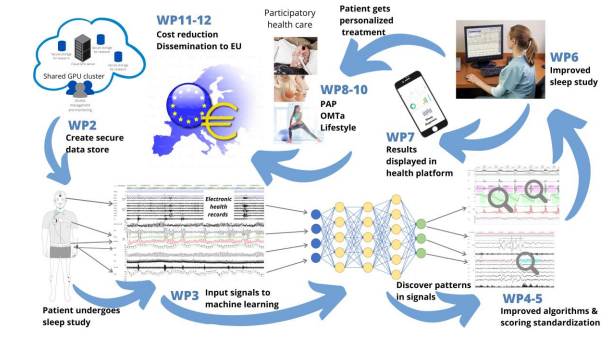Sleep Research Centre
The Sleep Research Centre is a multidisciplinary research group, which is reflected in the topics of the academic dissertations. There are several ongoing research projects in co-operation with other Finnish and international research groups.
The main research interests at the centre are interactions of sleep-disordered breathing and cardiovascular and metabolic function, special emphasis on nocturnal transcutaneous carbon dioxide profile, and menopause, sleep and breathing.
The Sleep Research Centre also organises Sleep School once a month during the academic year under the umbrella of the Postgraduate Education Unit (PGE).
The history of the Sleep Research Centre at the Department of Physiology dates back to the 1960’s when Associate Professor Pentti Valleala carried out sleep research in animals. Sleep research in humans started in the 1970’s. In 1979, Jukka Alihanka developed the static-charge sensitive bed (SCSB). The SCSB method was further developed by Olli Polo and implemented in the diagnosis of obstructive and central sleep apnoea, partial upper airway obstruction during sleep as well as in periodic leg movements. In Finland, sleep apnoea was mostly diagnosed with the help of the SCSB until the end of the 20th century. Since 2017, Sleep Research Centre has been part of the Department of Pulmonary Diseases and Clinical Allergology.
Research Projects
The Sleep Research Centre promotes co-operation and dialogue across disciplinary and institutional boundaries within the field of sleep research. Having its roots in basic physiology, the Sleep Research Centre aims at unfolding physiological mechanisms behind normal and disturbed sleep and disseminating new data in the field of sleep medicine for the benefit of medical students, health care professionals, scientists and the society.
